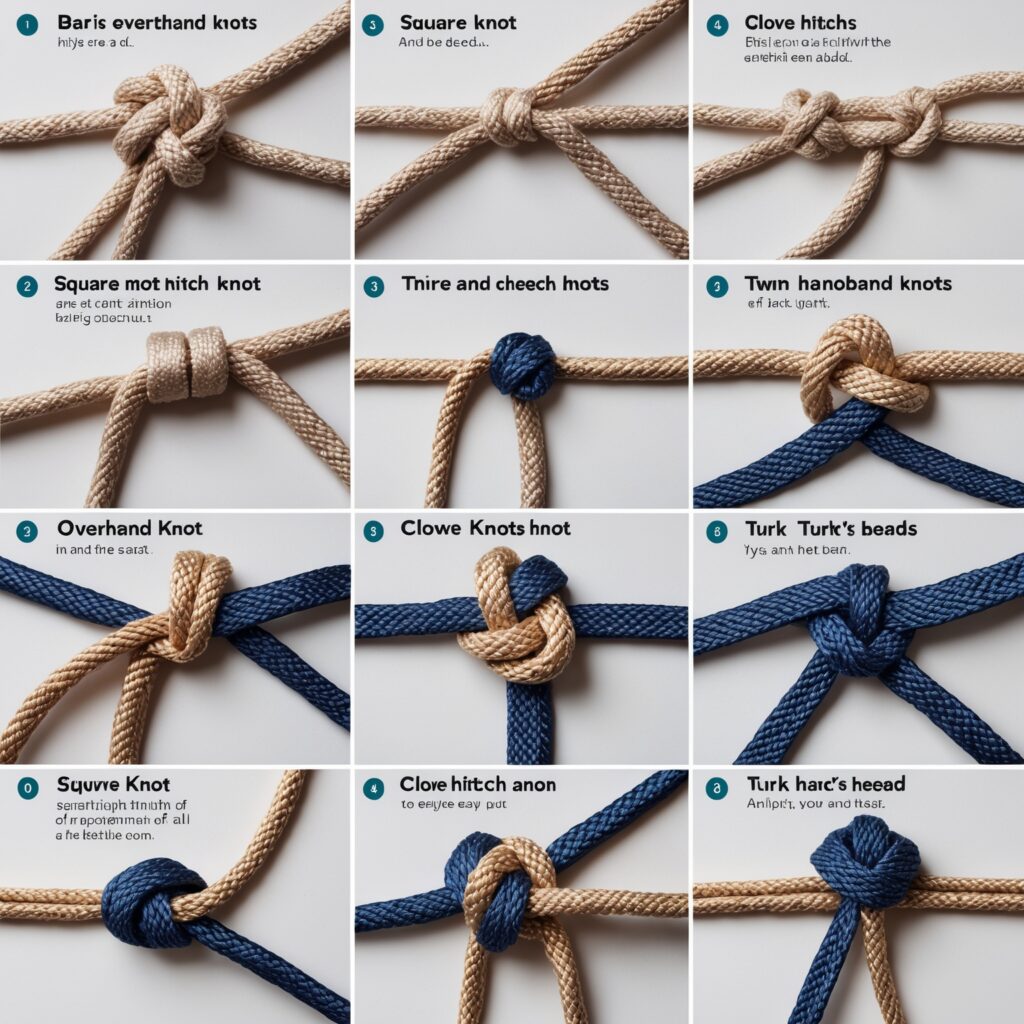Decorative knots are more about aesthetics than strength. They add a touch of elegance to various projects, from lanyards and bracelets to home décor. There are many types, including flat knots, round knots, square knots, and covering knots. Resources like “The Ultimate Book of Decorative Knots” offer comprehensive instructions and colorful photographs to guide you. The Ultimate Book of Decorative Knots: Philpott, Lindsey: 9781620878149 – Amazon.com excellent resources for learning how to tie these knots.
Step-by-step image:

Decorative knots serve primarily as embellishments, adding visual interest to various items. While not always focused on strength, many are derived from practical knots and can still be quite secure. Here’s a breakdown of some common types:
Based on Structure:
- Flat Knots: These knots typically lie flat and are often used in patterns like macramé. The Square Knot (also known as the Reef Knot) is a fundamental flat knot, often used in friendship bracelets and decorative borders.
- Round Knots: These knots have a more three-dimensional, rounded form. The Monkey’s Fist is a classic example, often used as a weight at the end of a rope or as a decorative ball.
- Covering Knots: These knots are used to wrap or cover an object or another rope. Hitching knots can be employed decoratively to create a spiral or banded effect around a handle or pole.
- Braided Knots (Sennits): While technically a braid, some decorative elements are created by braiding multiple strands in an ornamental way. Examples include the Four Strand Crown Sennit or the Single Strand Chain Sennit, which can be used for lanyards or decorative trim.
Specific Decorative Knots:
- Turk’s Head Knot: This is a highly versatile knot that can be tied in numerous variations and used for bracelets, rings, or decorative accents on handles and other objects. It’s characterized by its interwoven, spiraling appearance.
- Diamond Knot (Lanyard Knot): Often used at the end or in the middle of lanyards, this knot creates a distinctive diamond shape and can be tied with one or more strands.
- Matthew Walker Knot: This knot creates a bulbous, decorative end to a rope and is known for its intricate, spiraled structure.
- Carrick Bend and Carrick Mat: While the Carrick Bend is a strong joining knot, its elegant form makes it a basis for decorative mats and other ornamental pieces.
- Chinese Knots: This is a broad category encompassing many intricate and symmetrical knots with cultural significance, often used in jewelry, charms, and decorations. Examples include the Pan Chang Knot (Endless Knot) and the Friendship Knot.
- Celtic Knots: Inspired by historical Celtic designs, these knots feature interwoven lines with no beginning or end, symbolizing eternity. They are often adapted for rope art and macramé.
- Button Knots: These smaller, often tightly tied knots are used as decorative closures or accents. The Wall and Crown Knot can create a neat, ball-like end.
- Lark’s Head Knot (Cow Hitch): While simple, this knot is frequently used as a starting point in macramé and can create decorative hanging loops.
The beauty of decorative knots lies in their variety and the potential for creative combinations. Many knot-tying techniques can be adapted and embellished to produce unique and visually appealing rope art.